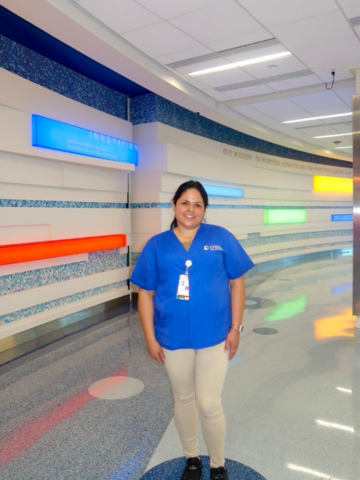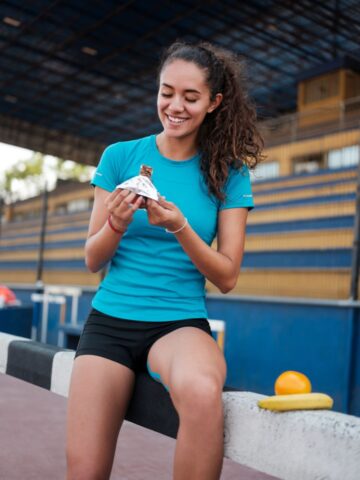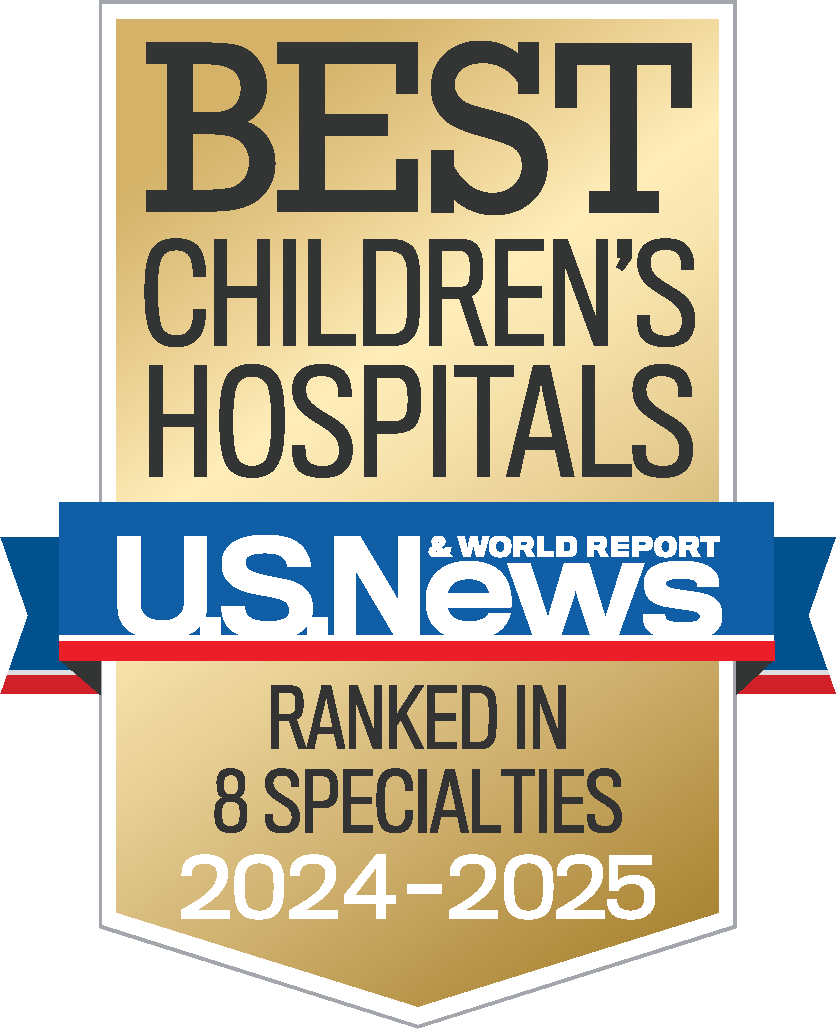Ellie was a typical seventh grade student who enjoyed playing volleyball when, during a routine physical, her pediatrician noticed that one shoulder appeared to be a little higher than the other. Her mom was told to keep an eye on it, but since it was minor, not to worry. A few months later, minor back pain after a growth spurt lead her mom to discover a curve in Ellie’s back. Another trip to the pediatrician soon followed.
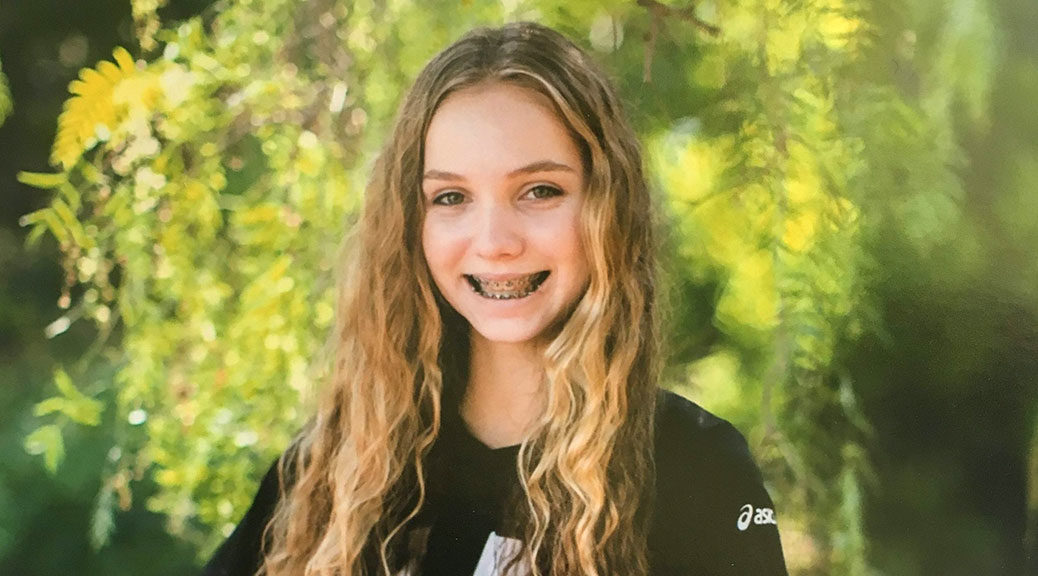
Initially Ellie and her mom Gail thought the back pain might be due to carrying a heavy backpack around school every day. But Ellie’s pediatrician diagnosed her with scoliosis, and referred her to Dr. Afshin Aminian, director of the Orthopedic Institute at CHOC.
“I wasn’t exactly happy about my diagnosis at the time,” says Ellie. “I was upset because I thought it would affect my daily life and I wouldn’t be able to do all the things I was used to doing, like playing volleyball, but Dr. Aminian helped me along the way and I grew into wearing my brace.”
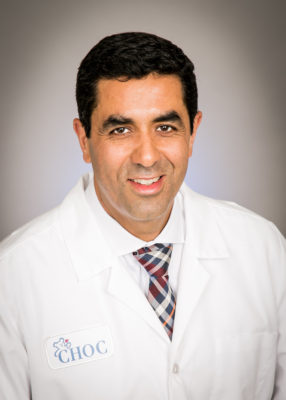
The curve in Ellie’s spine was less than fifty degrees, and non-operative treatment was recommended. She received a custom-fit brace that would apply pressure to the areas where the spine was exhibiting deformity, in order to reverse the curvature and prevent it from getting worse.
“It made me more self-conscious and it made the little everyday things people take for granted more challenging, such as tying my shoes. But I learned to adapt, and even more than adapt, prosper. Time gave me the gift of wisdom to deal with my scoliosis; scoliosis gave me the gift of knowing challenges are inevitable but my defeat is optional,” she says.
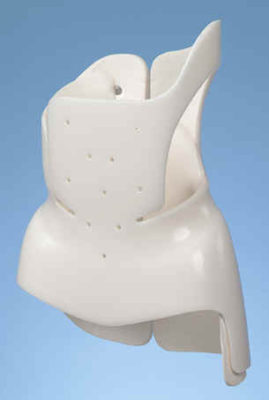
Wearing the brace practically around the clock took a few weeks to get used to. The first few nights she slept in a sleeping bag on her bedroom floor because it was more comfortable for her back.
At the time, Ellie and her mom wondered if she’d be teased for wearing a brace every day.
“I didn’t know what scoliosis was before my diagnosis. We visited with a family friend who has scoliosis and she gave me great ideas about what clothing to wear with my brace, and now you can’t even tell when I’m wearing it,” she says. “I saw that she was doing well after wearing her brace every day, so I always knew that I would be as dedicated as she was, and wear mine every day, too.”
Long tank tops that were soft and comfortable, loose-fitting shirts, and skirts became wardrobe staples as Ellie tried to camouflage her brace. Because of how far her brace comes down her back, shirts that are a bit longer in the back also helped, she says.
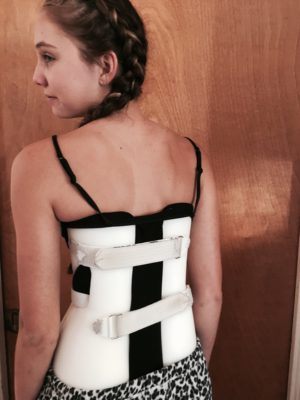
Hearing stories of other scoliosis patients who weren’t as regimented about wearing their braces reinforced for Ellie the importance of sticking to her brace regimen. She made special arrangements with her physical education teacher at school and her volleyball coach to change in private before class and practice because of her brace.
“Having scoliosis wasn’t Ellie’s first choice, but thanks to good support from her school, teammates and friends, she is thriving. Scoliosis just added a little complexity to things, and Ellie has mastered that very well,” says Gail, who helps Ellie tighten her brace after every time she puts it on and takes it off.
Thanks to Ellie’s dedication to wearing her brace every day, the curve in her spine drastically decreased, and she is now slowly able to decrease how often she needs to wear it, and in a few months, she will be brace-free.
“Scoliosis is 70 percent mental and 30 percent physical, so attitude is key,” Ellie says. “If you have a good attitude and are relentless in your bracing, you realize you sacrifice little for your future health.”
Ellie’s commitment to her care team’s plan was evident.
“Part of the reason Ellie’s bracing was so successful was due to her commitment to wearing her brace religiously, up to twenty two hours per day. She was disciplined and it paid off,” says Aminian.
Ellie’s hope for recently diagnosed scoliosis patients is that they would also prioritize their doctor’s orders over what other kids at school might tease them about.
“When I first got diagnosed and got my brace I was really scared and didn’t know what it would mean for me, but eventually you just get used to it, like braces. It’s uncomfortable at first, but every day it gets more normal,” she says. “It really works if you do it right, but you only get one shot at it. People shouldn’t worry too much about being teased but if they do, dealing with it makes you stronger in life.”
Get more expert health advice delivered to your inbox monthly by subscribing to the KidsHealth newsletter here.
Learn more about CHOC’s Orthopaedic and Sports Medicine Services
Our team of board-certified specialists and orthopaedics-trained staff provide a full spectrum of care for disorders of the bones, joints, ligaments, tendons and muscles.

